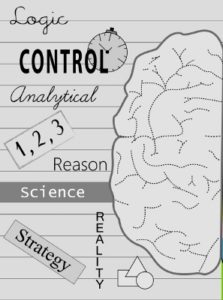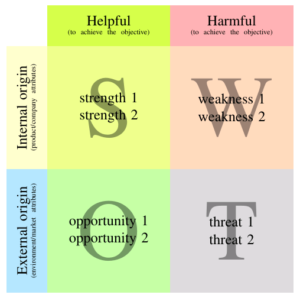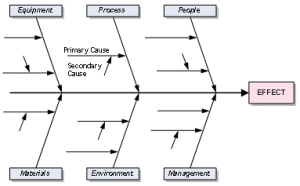 Do you feel misunderstood by your direct reports or colleagues? Do they think you’re an ogre when you’re really fun and fair? Or maybe they think you’re a pushover when you’re really purposeful and committed.
Do you feel misunderstood by your direct reports or colleagues? Do they think you’re an ogre when you’re really fun and fair? Or maybe they think you’re a pushover when you’re really purposeful and committed.
There might be a disconnect between what you intend and how you’re coming across. Here are four ways avoid misunderstandings by closing any gap between your intentions and your actual impact on others.Get clear about what you want to happen. Conventional wisdom says that we are on auto-pilot about 95% of the time. Which means we are consciously thinking about or aware of what we are doing very little during the day.
- Get clear. Know what you want to accomplish before you go into a meeting, have a conversation with a co-worker, or work on a project. Ask yourself what you want to get out your time spent.
- State your intentions. Based on the outcome you want to create, state your intentions out loud, especially when interacting with others. By doing so when going into a meeting or conversation, you are not leaving to chance how the other person will interpret what you say or do.
- Ask for the other person’s perspective first. As a leader, when you speak, your words carry weight, and that weight often shuts down others who are further down the food chain. Additionally, listening first will give you a chance to tune in to the other’s perspective.
- Seek to reconcile different perspectives. With a clearly stated intention and after sharing perspectives, you will have a better understanding of how the different perspectives overlap or don’t. Revisit your intention again, and ask for how you can move forward by using what most important from each perspective.
By consciously focusing on a clear intention and being open with your perspective, you can create conditions that allow others to “see” you for who you are.
WANT TO USE THIS ARTICLE IN YOUR NEWSLETTER, BLOG OR WEBSITE? You can, as long as you include this information with it: Beth Strathman works with leaders to maximize the “people side” of business and evolve into the leader they are meant to become. Learn more at: bethstrathman.com.
Follow Beth:
YouTube: Firebrand Consulting LLC
LinkedIn: /company/firebrand-consulting-llc or /in/bethstrathman
Facebook: /firebrandleadershipconsulting

 Assuming a new leadership role on the heels of a well-respected predecessor can be exciting and daunting at the same time. Regardless of the circumstances, the challenge is to be authentic while assisting others through the transition from the former leader’s style to yours. Remember that people can accept change if you focus on the nuts and bolts of the transition from Point A to Point B. When you are that Point B, consider the following tips to avoid tripping when stepping into someone else’s shoes:
Assuming a new leadership role on the heels of a well-respected predecessor can be exciting and daunting at the same time. Regardless of the circumstances, the challenge is to be authentic while assisting others through the transition from the former leader’s style to yours. Remember that people can accept change if you focus on the nuts and bolts of the transition from Point A to Point B. When you are that Point B, consider the following tips to avoid tripping when stepping into someone else’s shoes: We are educated. We are modern human beings. We make decisions every day. How inaccurate and incomplete can our thinking be?
We are educated. We are modern human beings. We make decisions every day. How inaccurate and incomplete can our thinking be?

 Whether you were recently promoted to a leadership position for the first time, or you are a seasoned leader hired into a new company, stepping into a new role is exciting . . . and it can also be fraught with landmines and interpersonal dynamics you never dreamed of. If you transition to your new role thoughtfully, you increase your odds of making a great impression on others, avoiding critical errors that come from underestimating the power of corporate culture, and laying the foundation for getting results later on.
Whether you were recently promoted to a leadership position for the first time, or you are a seasoned leader hired into a new company, stepping into a new role is exciting . . . and it can also be fraught with landmines and interpersonal dynamics you never dreamed of. If you transition to your new role thoughtfully, you increase your odds of making a great impression on others, avoiding critical errors that come from underestimating the power of corporate culture, and laying the foundation for getting results later on. You dream of working easily and seamlessly with colleagues with little or no contention. Who really wants to work in a contentious environment? Surprisingly, little or no disagreement/conflict is a sign that your group is not as good as you think. When there is little if any open disagreement about matters of importance (mission, values, projects, and goals), your nice and easy culture is in trouble of complacency and of becoming irrelevant. The group becomes vulnerable to “group think” without the ability to thoroughly vet ideas and does not adapt quickly and strategically to changing conditions nor does it evolve rapidly enough to face handled new challenges. And you know without little outward disagreement your colleagues are expressing disagreement and discontent out of the light of day among themselves.
You dream of working easily and seamlessly with colleagues with little or no contention. Who really wants to work in a contentious environment? Surprisingly, little or no disagreement/conflict is a sign that your group is not as good as you think. When there is little if any open disagreement about matters of importance (mission, values, projects, and goals), your nice and easy culture is in trouble of complacency and of becoming irrelevant. The group becomes vulnerable to “group think” without the ability to thoroughly vet ideas and does not adapt quickly and strategically to changing conditions nor does it evolve rapidly enough to face handled new challenges. And you know without little outward disagreement your colleagues are expressing disagreement and discontent out of the light of day among themselves.